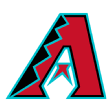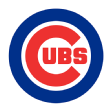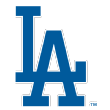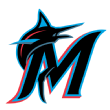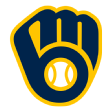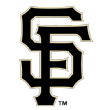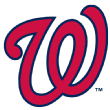Our breakdown of the 2019 draft began with a recap of the American League's most notable picks, so it's now time to examine -- you guessed it -- the National League.
More MLB draft coverage: ![]() Law: What I liked (and didn't) on Day 1 | First-round analysis and complete draft results | Day 2 names to know
Law: What I liked (and didn't) on Day 1 | First-round analysis and complete draft results | Day 2 names to know
The Diamondbacks got the best value of the first round when they landed my No. 4 player, Seattle prep outfielder Corbin Carroll (1), with the 16th pick. The only knock I could ever get anyone to offer on Carroll was his height -- he's maybe 5-foot-10, but if he were 6-2, he would have been in consideration at 1-1. Arizona did something similar last year when it got Alek Thomas, whom I'd ranked as a first-round talent, in the second, only to have Thomas rake in pro ball. I imagine the D-backs are thinking they did something similar here, as Thomas is also under 6 feet and played at a cold-weather high school. They followed that with five straight pitchers, two prep kids and three college guys, all with varying chances to start, led by prep right-hander Brennan Malone (1A) from IMG Academy, who probably has the highest upside and also was the best known of the group. Blake Walston (1) is a projectable prep left-hander with a curveball that projects to plus, with his fastball just average-ish now. He's enticing for what he might be but also has a lot of growth required to get there.
Ball State right-hander Drey Jameson (1A) is a four-pitch starter who has two above-average weapons, including a plus fastball. Between his below-average changeup and slight stature (he's listed at 6-foot, 165 pounds), most teams projected him as a reliever, but he should at least get to prove he can't start in the low minors. Ryne Nelson (2) has a huge fastball when he's working in relief and could be a power reliever with two plus pitches in the fastball and breaking ball. He was a two-way player until this year and might improve as a starter now that he's focused only on pitching, as he has the athleticism and delivery to be more than a short reliever.
Michigan lefty Tommy Henry (2A) was tremendous out of the gate this year, with his fastball ticking up to 91-93 mph, but got knocked around in conference play with a staff-worst 6.50 ERA in the Big Ten, as his fastball backed up into the upper 80s. He did show better velocity in the conference tournament and regional and has excellent feel to pitch. Their last pick of Day 1 was Arkansas outfielder Dom Fletcher (2A), who has an unorthodox swing and has shown surprising power along with great instincts in center field.
Georgia Tech two-way guy Tristin English (3) has some raw power and arm strength, probably an overdraft here to save money since he's a senior. Glenallen Hill Jr. (4) isn't as big or powerful as his father was, with more contact and more speed. He's rough at short, and could go to second or center field, but I think the bat speed is enough to give him a chance to be a regular. I had him as a second/third-round talent.
Conor Grammes (5) has been up to 100 mph for Xavier but has 20 control. He was also DHing and has some power, so I suppose you could hope you make him purely a reliever and see if you can harness the stuff, which was even mid-90s as a starter. Spencer Brickhouse (7) has 70 raw power but East Carolina has him hitting with no stride and no rhythm, so there could be more production in there with different coaching; his problem is a lack of any defensive position whatsoever. Lefty Avery Short (12) is like a poor man's Walston -- 86-92 with a good curveball, more of a pitcher right now than Walston is, but with less projection and a short delivery that has him off the rubber quickly.
Atlanta's draft looked light after the first two days, but the Braves did more on Day 3 than any other club, packing their draft with intriguing athletic kids from high school or junior colleges. They took a value guy at No. 9 in catcher Shea Langeliers (1). I thought they'd go for upside with Corbin Carroll, but Langeliers is a no-doubt catcher, maybe a 70 defender there, whose production at Baylor might understate his potential with the bat given his exit velocity. They turned around and took another fairly safe player in Braden Shewmake (1), a shortstop from Texas A&M who'll head to second or third, with a solid left-handed swing that should at least produce a lot of contact. Oregon State shortstop Beau Philip (2) was a real reach on Day 1, just an adequate defender at short who runs flat-footed. He hit only five homers this year with a .369 OBP, striking out twice as often as he walks, and rarely pulls the ball. Prep outfielder Michael Harris (3) was a two-way guy who came out of MLB's RBI program. He has been up to 93 on the mound, and as a hitter has plus-plus raw power with above-average speed and good instincts in center field.
Stephen Paolini (5) played at a private school in Connecticut and was lightly scouted this spring, but he has five-tool potential, a 60-70 runner with a 50 arm and plus power now. He also played basketball and has that kind of athletic body, running well in center field with good reads. He's really very interesting for the fifth round, with the kind of profile that gets you on Day 1 if you play in Florida or Texas, or at least get invited to major showcases the summer before your draft year.
Seton Hall right-hander Ricky DeVito (8) has an average fastball/curveball combination but a short stride and weak front leg limits his stuff and durability. I think he's a pen guy unless they change his entire delivery, but he's still just 20 and could have some untapped upside with development. Brandon Parker (10) was committed to Dallas Baptist, a corner outfielder with huge power and hard contact, along with average arm and run tools. He turned 20 a week ago, so he was young for a second-year juco kid.
Atlanta had quite a bit of pool money left over from their top 10 rounds, and they put it to good use on Day 3 with several high-upside high school picks. Vaughn Grissom (11) was the shortstop on No. 5 overall pick Riley Greene's team. The FIU commit projects to stay at shortstop, and is an above-average runner with above-average speed. His swing is good but he has to fill out and get stronger. I'm told he's no relation to Marquis, which is mildly disappointing, although if Marquis has a son I hope he has named him Baron.
Andy Samuelson (12), a first-year juco kid, is a lefty with a plus curveball now and a good, projectable body that gives hope he'll get to above-average or better velocity. Tyler Owens (13) is a 5-foot-10 right-hander who touched 98 this spring and can sit 94-96, with a future plus curveball. He was committed to Florida, and the only real knock on him is his height, even though he's very strong for his size. Isaiah Johnson (14) was a pop-up high school kid from Mississippi who touched 96 with a clean arm action, more a bet on the help he'll get from professional coaching than just hoping for physical projection. Joey Estes (16) and Mahki Backstrom (18) are both very young -- neither turns 18 until October -- which is obviously more of a factor now in the draft than it was even five years ago. Estes can show you good velocity and spin on a breaking ball, and Backstrom has 70 raw and hit better at the end of the spring after getting his vision checked out. Kadon Morton (19) is an athletic two-way player from Texas who'll go out as a center fielder and has a pretty good right-handed swing.
The Cubs took the hardest-throwing starter in the draft with 6-foot right-hander Ryan Jensen (1), who hits 100 mph and frequently sits 97-99, with an average slider and solid control. Everyone wants to stick him in the bullpen because he's short and throws hard, but he has the ability to hold that velocity deep into games as a starter. Chase Strumpf (2) could have been a first-rounder had he had a better year for UCLA; he's a shortstop who'll move to second base and did have a first-round kind of spring in 2018 as a sophomore, hitting for average and power with a slightly better contact rate.
Louisville right-hander Mike McAvene (3) returned from Tommy John surgery in 2018 and was the team's closer this spring. He's 92-96 with both a slider and changeup even out of the bullpen, so he could be stretched out to start -- although he has some effort and he lost his command in his second inning the night I saw him this spring.
USC right-hander Chris Clarke (4) is another college reliever who had Tommy John surgery. He throws 92-95 with good sink and also has a slider and curveball, both in the low 80s. He could end up starting although I get the sense the Cubs wanted to take fast-moving relievers. Washington right-hander Josh Burgmann (5) really competes with fringy to below-average stuff, 89-92 with a clearly below-average changeup. He's yet another post-Tommy John prospect. Alabama prep catcher Ethan Hearn (6) came into the year as a below-average receiver with bad hands behind the plate but improved over the course of the spring both in catching and throwing after working on it in the offseason. He's still more of a power over hit guy at the plate. He'll turn 19 in August.
Davidjohn Herz (8) was seen as a very tough sign due to his commitment to UNC. He's a right-hander and quarterback, up to 94, very athletic, but fairly raw as a pitcher because he plays three sports.
The Reds crushed this draft. They seemed to be locked in on Nick Lodolo (1), the top college lefty in the draft, since February; he looks as if he'll move fast in any role, getting ground balls with his fastball and missing bats with his slider. They went for broke with their second pick, taking Rece Hinds (2), a shortstop who will move to another position, has 80-grade power, and swings and misses a ton for a high school hitter.
Tyler Callihan (3) has no clear position, but he can really hit, with a good swing, an approach, and power, a bit in the Jesse Winker mold; it's a first-round bat, at least, and whether he's a first-round talent depends on whether you think he can handle some defensive role. He has tried to catch a little bit, but I think the bat is too advanced to mess with that. Second baseman Ivan Johnson (4) transferred to Chipola College this year from Georgia and broke out, with potentially plus power and at least average defense at second base. He's a switch-hitter but right now better from the left side.
Right-hander Graham Ashcraft (6) has a huge arm, getting into the upper 90s, with the hard slider you'd expect; he has a little Sean Newcomb to his delivery, very loose but uncontrolled, without much use of his lower half, so he's a clear reliever and really hasn't thrown a lot of strikes so far. Eric Yang (7) is a solid catch-and-throw guy behind the plate who has a decent feel to hit, rarely striking out, with fringy power; he looks like a quality backup with a chance to develop into a little more.
Grand Canyon outfielder Quin Cotton (8) looks like a good extra outfielder, with a good, compact swing for contact, probably lacking the power for a corner and with just average speed so he's not going to play center. Yan Contreras (12) is a Puerto Rican shortstop with a great swing that could produce average and power; he has a plus arm but probably won't have the range for short and will move to third base.
The Rockies took Michael Toglia (1) with their first pick this year. He's a great defensive first baseman with some power but there are questions about his plate discipline and how much he'll hit. He could also move to the outfield. Their second-rounder, Aaron Schunk (2), showed off his enormous raw power in the regional for Georgia, with a good swing, great arm strength, and a chance to stay at third base, although he might be a low OBP guy.
They took Michigan right-hander Karl Kauffmann (2B), who has too many letters in his name, with their Comp Round B pick. He works in the low 90s with good sink and a slider that projects to above average, with some reliever risk but enough to go out as a starter. UConn right-hander Jacob Wallace (3) is a power reliever with a pure bullpen delivery, mid-90s fastball, and above-average slider. He's a one-inning type and could just move quickly if the Rockies want to do so, since what you see is what you get.
Shepherd University outfielder Brenton Doyle (4) was the first Division II player taken this year, toolsier than most D2 products. He's a power/speed guy who walked almost twice as often as he struck out this spring but didn't face any quality pitching this spring and only played briefly in the Coastal Plain League last summer, so I don't think we have a great measure of his present hit tool. Will Ethridge (5) was the No. 1 starter for Ole Miss this year, a strike-thrower with three average to fringy pitches, but nothing likely to miss bats in pro ball right now. He has the command/control and simple, quiet delivery to be a back-end starter but might give up too much contact.
Right-hander Jacob Kostyshock (8) has velocity that can sit at 96 mph with good life and occasionally shows an above-average slider, although he tends to drop his arm too much on the pitch, causing it to flatten out. With a little help he could be a solid two-pitch reliever. Isaac Collins (9) has plus speed and athleticism, playing second base and potentially some outfield. He's a switch-hitter with a little pop, probably a good utility guy who can play three to four different positions and be a useful bat off the bench.
The Dodgers had an extra first-round pick because they didn't sign their pick from last year's draft. They led off with Tulane slugger Kody Hoese (1), a fourth-year junior who was among the leaders in homers in Division I this year, a late bloomer who has always shown the ability to make contact and might stay at third base. North Carolina first baseman Michael Busch (1) has a great swing and a history of getting on base with big power. I'm surprised he has never hit for a higher average given his eye and how well his hands work.
They went for some upside with prep right-hander Jimmy Lewis (2B), a teammate of Mets' first-rounder Brett Baty; Lewis is projectable and athletic, 91-95 with feel for a curveball already, a perfect projection high school kid if you want to fish in that end of the lake. Ryan Pepiot (3) misses a ton of bats -- he had 126 strikeouts in 78 innings this spring, a 38% rate -- with great deception in his delivery and high spin rates, boosted by a power curveball with two-plane break. He projects as a mid-rotation starter.
UC Irvine third baseman Brandon Lewis (4) dropped 70 pounds after high school (something MLB.com mentioned on its draft broadcast) and made himself a quality college player, but his swing is long and he punches out way too often for a corner guy, especially one who might have to move to first. Jack Little (5) had great numbers, but he's a low-slot right-hander who's throwing 89-91 to go with a flat slider, a very limited upside guy who might be a right-handed specialist as he is today.
Nick Robertson (7) is a big kid with arm strength, 92-96, but doesn't have a consistent breaking ball and profiles as a reliever. Ryan Ward (8) is a redshirt sophomore from Bryant who missed almost his entire first year because of a broken wrist; he can hit, rarely striking out, but lacks a position and has a below-average arm.
Miami took Vanderbilt outfielder JJ Bleday (1), who has exceptional hand strength for all-fields power even with a decent-sized hitch in his swing, along with a good eye at the plate and what should be above-average defense in either outfield corner. Outfielder Kam Misner (1A) has the tools to be a top-10 pick but had a really rough go in the SEC after a big start in nonconference play, hitting .222/.353/.315 in conference with a nearly 30% strikeout rate. He is a potential difference-maker with his power/speed combination, but is he another Jeren Kendall?
The Marlins took plus defensive shortstop Nasim Nunez (2) with their second-round pick. Nunez is undersized but is at least a grade-60 defender at short, maybe more, and has begun switch-hitting in the last year to try to take more advantage of his plus speed. The best-case scenario for him at the plate is a high-OBP leadoff hitter, as he projects to 40 power at most. Wright State center fielder Peyton Burdick (3) has plus raw power, but he's 22, has had Tommy John surgery, and his hit tool is lacking; he might be a money-saver.
NC State first baseman Evan Edwards (4) is a senior, limited to first base, probably another well below-slot guy, but he's a plus defender at first with real power, so better than your typical senior sign. Evan Fitterer (5) was just off my top 100, a high school right-hander throwing up to 95 mph with good feel to pitch; he's probably the over-slot guy they wanted after going under with the previous two picks. They went with college seniors in rounds 6 through 10, so unless they're going over for someone like Chris Mokma (12), a projectable right-hander from a Michigan high school, this seems a little light.
The Brewers had an interesting Day 1, certainly, reaching a little bit for Mississippi State lefty Ethan Small (1) in the first round. Small is a redshirt junior who missed 2017 after Tommy John surgery, and struck out 44% of the batters he faced as a starter this year for the Bulldogs even though his velocity hasn't come all the way back post-surgery. Their second pick, junior college lefty Antoine Kelly (2), has velocity that sits in the mid-90s with an unrefined delivery but a lot of athleticism and a projectable 6-foot-6 frame. Teams had concerns about his makeup, however, that seemed as if it would push him well into Day 2.
Washington catcher Nick Kahle (4) is a very good receiver with a fringy arm, and posted a .506 OBP this year with 59 walks in 239 plate appearances, but his power is limited and he isn't agile behind the plate. Ole Miss slugger Thomas Dillard (5) doesn't have a position, but he is very strong. His wide-open, no-stride approach might lead to a lot of trouble with off-speed stuff as he moves up the ladder. Louisville's Nick Bennett (6) is a finesse lefty who needs to throw more strikes to succeed with his current stuff.
Second baseman Gabe Holt (7) is a plus runner with good hand-eye at the plate, making a lot of contact without power; I saw Holt get three of his team's four hits against Blue Jays' first-rounder Alek Manoah back in April. He might be a regular although his lack of pop could make him more of a bench guy who will move around a few positions. David Hamilton (8) missed all of 2019 because of a ruptured Achilles tendon; he was, at least prior to the injury, projected to stay at shortstop, although his bat was light in both contact and power. Taylor Floyd (10) struck out 78 guys in 50 innings for Texas Tech this spring, working with good deception that helps his fastball/slider combo play up.
The Mets were the first surprise of the draft's first night, at least to me, when they went for high school hitter Brett Baty, whose age (19.5) seemed to dominate any discussion of his stock this spring. It is a legitimate variable to consider, because older high school hitters have a somewhat worse outlook -- they're older than the pitchers they're facing, so scouts do not get to see them against competition their own age -- but should never be seen as a reason to "kill" a prospect in the draft. Baty has a great swing and plus power, and the lack of projection from his age isn't a problem because he's already on the strong side. They stayed high school with the projection right-hander Josh Wolf in the second round.
The Mets swung big in the third round by taking the best prep arm in the class, right-hander Matt Allan (3), who has a plus curveball now and above-average velocity, with solid control and even good command for a high schooler for most of the spring. They went for college seniors after that, taking Mississippi State outfielder Jake Mangum (4), a strong performer with no power; he's already 23 years old but has a long history of making contact.
Right-hander Nate Jones (5) throws 91-96 to go with an average breaking ball; he's athletic and his arm is really quick, better than your typical senior sign pitcher. They also took Wichita State second baseman Luke Ritter (7), another high performer who makes a lot of contact with just fringy power.
I'm assuming the Mets know they can sign Allan. But if something goes wrong -- if he were to fail his physical after agreeing to terms, for example -- they took a few over-slot candidates after the 10th round, including low-slot lefty Hunter Barco (24) and hard-throwing right-hander Joseph Charles (25), whom they could try to sign with the pool money they'd reserved for Allan.
The Phils took my No. 13-ranked player, Bryson Stott (1), at No. 14, so that's right in his range. He's a no-doubt shortstop with power but some swing-and-miss potential, good value at that spot. That was their only pick on Day 1.
Jamari Baylor (3) was a reach at pick No. 91, a high school shortstop who will turn 19 in August and whose tools are light beyond his ability to run. He might not stay at shortstop and doesn't project for power, while scouts had concerns about his history of going to three different high schools. Stanford lefty Erik Miller (4) was a second-round talent, with a three-pitch mix and good delivery, hitting 97 mph on the Cape last summer but not pitching there this spring. He has to throw more strikes, let alone find average command, to remain a starter, but the parts are in place for it.
Gunner Mayer (5) must be the team betting on a player's body type. He's 6-foot-6 but his delivery is very violent, as he falls off hard to his glove side and has a major head-whack at release. Andrew Schultz (6) throws 98-101 mph as well as an above-average slider with a violent throwing motion, including a head-whack and a super-long, stiff delivery. The stuff is real but that's an ugly way to pitch.
The Pirates grabbed two favorites of mine in right-hander Quinn Priester at pick No. 18 and then outfielder Sammy Siani in the comp round. Siani might have been a first-rounder had he faced better competition this spring, and Priester's delivery was one of the best I saw this whole spring. Priester has good mid-rotation upside with a potentially plus curveball and a fastball that's already up to 96 mph. Developing the change and refining his command (since his fastball can flatten out) will be his keys. Siani has a very good feel to hit, and he has been aggressive in high school in attacking pitches he knows he can hit early in counts, so he doesn't walk or strike out very much. He's probably a corner outfielder in the end, but I'd run him out in center.
Indiana outfielder Matt Gorski (2) is a very good athlete with raw power but has trouble recognizing spin and he bars his lead arm, so there's a lot of swing and miss here. Houston third baseman Jared Triolo (2A) has quick hands at the plate, probably more of a contact swing than a power swing, and hit very well on the Cape last summer; he has also shown patience both in school and over the summers.
Outfielder Matt Frazier (3) seemed like an overdraft in the third round; he broke a hamate bone just 19 games into the season and didn't return, and prior to that was the sort of no-power contact hitter the Pirates have typically targeted in previous drafts. JC Flowers (4) is a great athlete who played the outfield and pitched for Florida State; the Pirates announced him as a pitcher even though he threw only 23 innings this year.
Will Matthiessen (6) was a two-way guy at Stanford, pitching at 88-89 with steep plane, with a potential plus pitch in a 12/6 curveball and a usable changeup. He's interesting as a back-end starter candidate especially now that he'll only be pitching. Catcher Blake Sabol (7), whose brother had a brief career in the Mets' system, has a decent swing and eye at the plate but didn't produce at all in three years at USC.
Jase Bowen (11) should be an over-slot signing and well worth it. The Michigan State commit has played short and pitched, but the Pirates announced him as a center fielder. He's a plus runner with a plus arm, with a short, slashing swing that should produce contact but perhaps not power. He was also committed to play wide receiver for the Spartans.
The Cardinals took Kentucky lefty Zack Thompson (1), who had top-10 stuff but slid a little into the teens because teams were concerned about the time he missed in 2018 because of a forearm injury. It's a smart risk for the spot because that's the kind of upside the Cardinals rarely get drafting late in the first round. Their second pick, Tre Fletcher (2), is a raw prep outfielder from Maine who reclassified into this year's draft and was seen as a tough sign due to his Vanderbilt commitment. He's a plus runner with power, but the hit tool appears to be very far behind.
Georgia right-hander Tony Locey (3) has plus velocity from a high three-quarters arm slot, throwing 93-97 mph to go with a mid-80s slider, with the changeup behind the other two. He works as a starter now and really competes but needs to tighten his command and improve the changeup for that; otherwise he could be a power two-pitch reliever, and some scouts feel as if he has a closer's mentality.
UC Irvine right-hander Andre Pallante (4) has shown huge velocity in relief but was just average as a starter, showing good feel to pitch but with just average or fringy stuff across the board; he can pitch enough to be a starter, but there's probably more upside in relief. Lefty Connor Thomas (5) is a little undersized and works at 87-90 but has solid average command with two average secondary pitches and great feel.
Tyler Statler (14) fouled a ball off his own face last May and nearly lost vision in one eye. The 6-foot-6 right-hander is pretty raw on the mound, right down to his delivery, but he's a great athlete who also played center and power forward for his high school basketball team. He's committed to Southeast Missouri State.
The Padres ended up with CJ Abrams (1), who was the sixth guy of the six position players expected to go in the top half-dozen picks, with their first pick. He's an 80-grade runner who can handle shortstop but could always end up in center field, and should hit for average but showed a little swing and miss this spring. Their second-rounder, Josh Mears (2), feels like a very Padres pick, with explosive bat speed and power in a corner outfielder package, and perhaps not quite as raw a hitter as scouts thought coming into the spring.
Logan Driscoll (2A) might be a below-slot guy given who was taken around him; the George Mason catcher wasn't a top-five rounds guy on talent, a mediocre defender who beat up bad competition this spring but struggled on the Cape last summer. Hudson Head (3) was a two-sport star in high school with some five-tool potential, as he's a plus runner with great bat speed, although he bars his lead arm with a very deep load, which can be an impediment to contact. He should stay in center field.
Niagara right-hander Matthew Brash (4) popped a little bit this spring, coming on with two potentially plus pitches in a 92-95 mph fastball and a tight slider with plus tilt. He's athletic with a very quick arm, but on the smaller side and could end up a two-pitch reliever. Right-hander Chris Lincoln (5) has big arm strength, in the mid-90s by the end of the spring, with big spin on a slider; it's not an ideal delivery, but he has the two pitches to succeed in some role.
Vanderbilt right-hander Drake Fellows (6) came into the year as a potential third- or fourth-round pick, but his command and control took a step backward; he's usually in the low 90s, touching 95, along with an average slider, durable as a starter but more likely a two-pitch reliever. UConn lefty Mason Feole (11) started slow this spring with forearm soreness and had a down season, walking 46 in 77 innings; with a very high slot and some violence to the delivery, he's a two-pitch reliever, with the curveball a potential out pitch against left-handed batters.
They could boost their draft by signing Bodi Rascon (14), a projectable 6-foot-5 left-hander who has been reaching up to 94 mph but is generally raw in other areas of pitching. The Padres took a flyer on Maurice Hampton (23), but he indicated before the draft that he preferred to go to LSU to play football and baseball.
San Francisco went with a pair of solid college position player prospects with their two Day 1 picks. With the 10th overall pick, they grabbed Arizona State outfielder Hunter Bishop (1), who was leading Division I in home runs early this spring but tapered off once conference play began. He's a left fielder in the long run and does have some swing-and-miss concerns, but he has some idea of the strike zone. Louisville first baseman Logan Wyatt (2), has an above-average hit tool that could end up plus but doesn't show the game power you want from the position. He looks like an ideal candidate for swing optimization work to get to more power, as he has the size and strength to hit 20-plus homers, and already has the other skills you'd want in a middle of the order bat.
Grant McCray (3) seems like a two-year rookie ball guy, a raw high school outfielder with plus speed and above-average defense, probably needing a lot of time to develop with the bat. His father, Rodney, played briefly in the majors for the White Sox and Mets.
Louisville shortstop Tyler Fitzgerald (4) is a solid contact hitter and runner, with good instincts at short, perhaps not rangy or athletic enough to stay there in the long run. Shortstop Dilan Rosario (6) won't turn 18 until next month, and could be a regular at the position between his above-average defense and hand strength to at least make quality contact. He's an above-average runner whose one deficiency is power.
Caleb Kilian (7) was pitching with average velocity most of the spring but ticked up to a 55/60-grade fastball near its end. He throws strikes but needs a better breaking pitch to miss bats. Right-hander Trevor McDonald (11) should sign as an over-slot guy; his velocity jumped this spring, to where he was hitting 95 regularly with an average breaking ball, although he has some violence to the delivery and might project to the bullpen.
The Nats had to be thrilled when the year's top juco player, right-hander Jackson Rutledge, slid to their pick after everyone thought he'd go somewhere in the No. 9-11 range, but it did ruin my streak of predicting their picks accurately. I had one front-office source with another team say Rutledge had the best fastball/slider combo in the class. That was their only pick on Day 1. They took Florida State third baseman Drew Mendoza (3) to start Day 3; he has raw power, a long swing, a lot of swing and miss, and below-average defense at third. He's very famous, having supposedly turned down multimillion dollar offers out of high school, but struck out 130 times across the past two springs and doesn't make adjustments at the plate.
Arkansas lefty Matt Cronin (4) has hit 98, pitching in the mid-90s, with a power curveball, a pure reliever who will move as fast as his control allows. Florida right-hander Tyler Dyson (5) came into the year as a likely Day 1 pick but was awful when healthy and missed a few starts, showing velocity but 35 command and lacking the normal bite on his breaking ball.
Todd Peterson (7) has a big fastball and a big body (listed at 6-foot-5, 230 pounds) but hasn't missed as many bats as he should with that stuff, with just 40 strikeouts in 44 innings out of LSU's bullpen this spring. Jeremy Ydens (8) was a surprise pick after he missed more than half of UCLA's season because of a finger injury he suffered on a bunt attempt (just more evidence teams should stop bunting). He has a no-load, contact swing, with minimal power, and can run a little, but in his one full season at UCLA he struggled with the strike zone.
True to form, the Nats didn't take any high school kids until the 23rd round.

